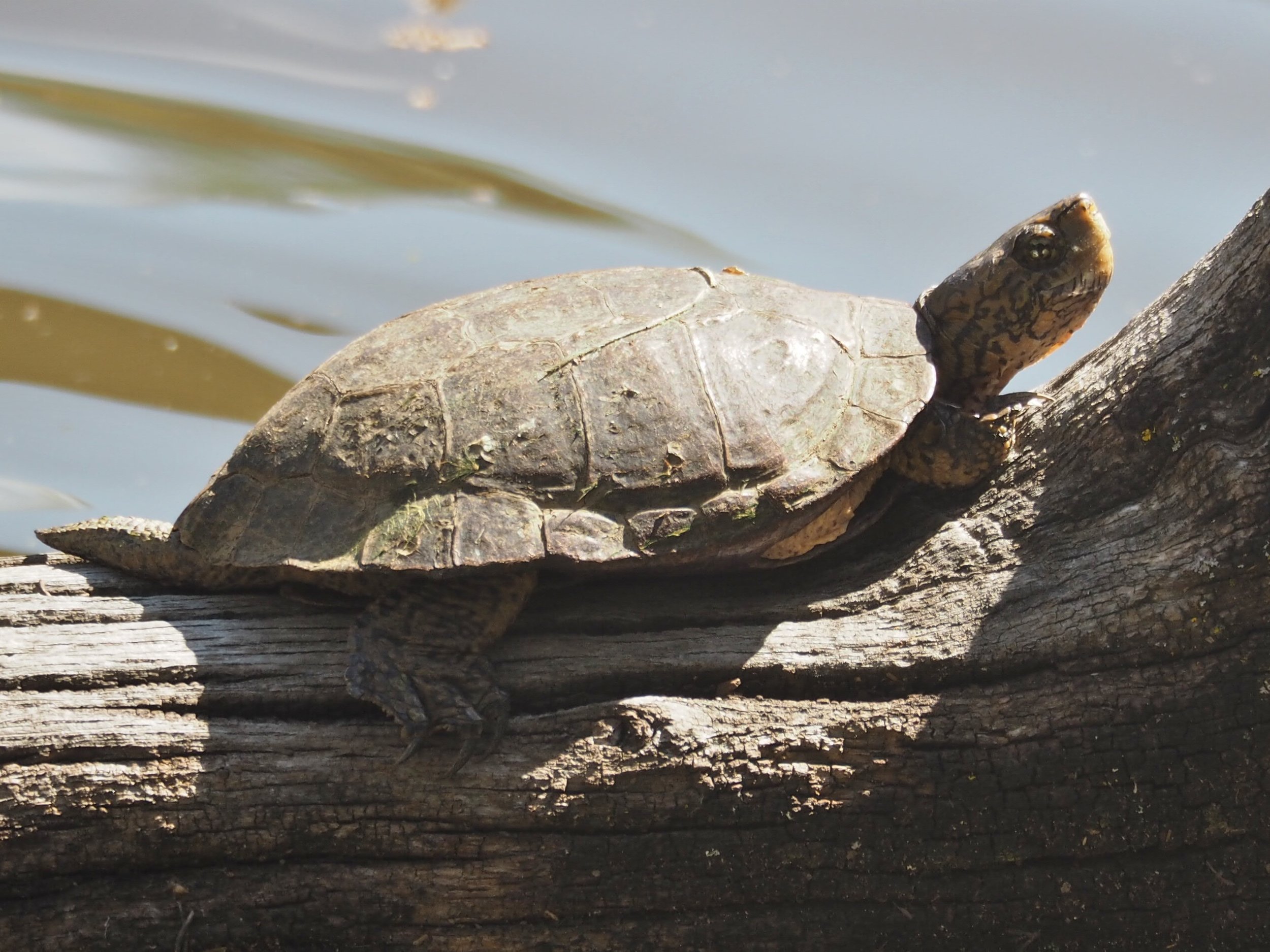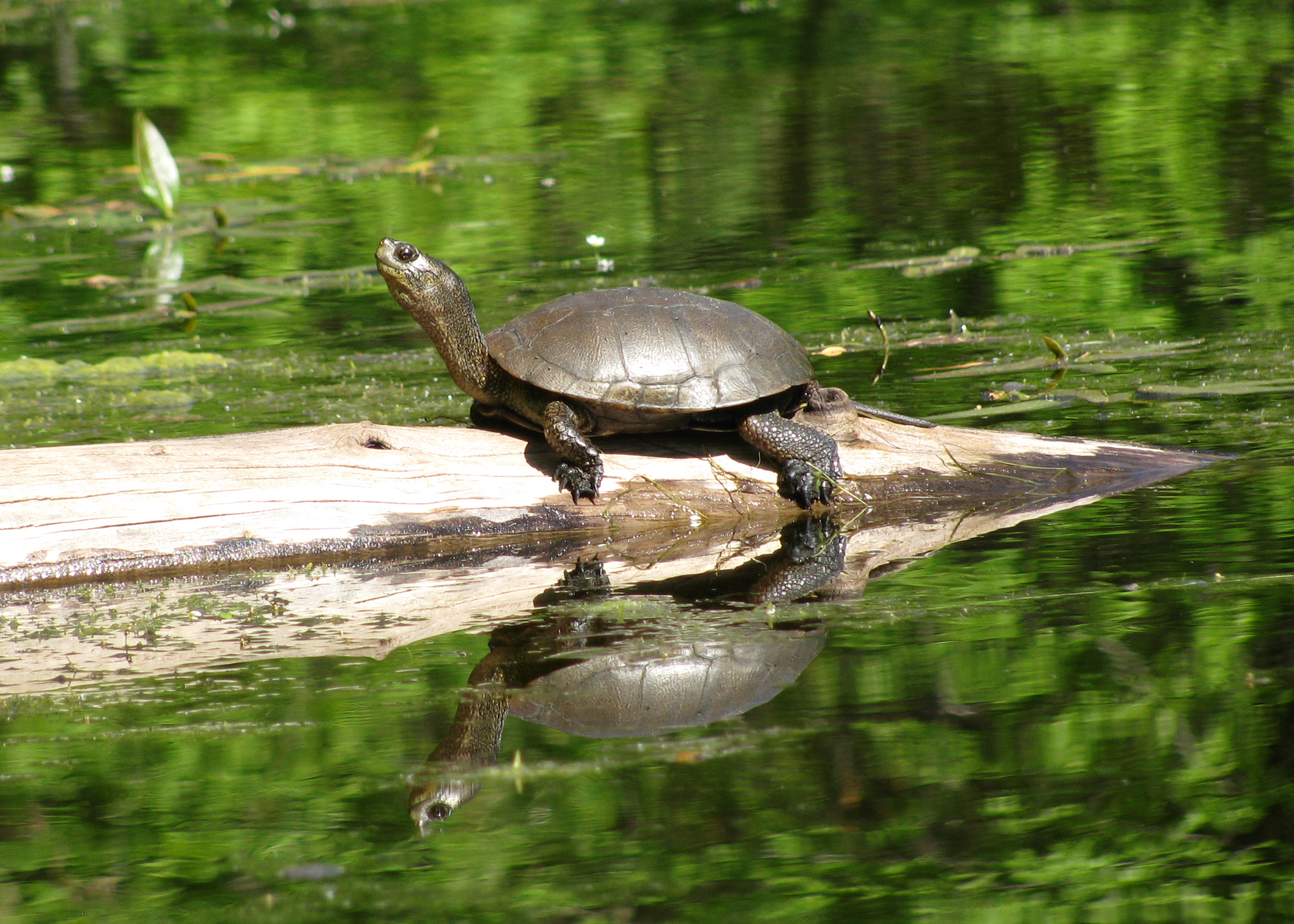Western Pond Turtle
The western pond turtle (Actinemys marmorata or Emys marmorata), or Pacific pond turtle is a small to medium-sized turtle growing to approximately 8" in carapace length. It is limited to the west coast of the United States of America and Mexico, ranging from western Washington state to northern Baja California. In May 2002, the Canadian Species at Risk Act listed the Pacific pond turtle as being extirpated in Canada.
The dorsal color is usually dark brown or dull olive, with or without darker reticulations or streaking. The plastron is yellowish, sometimes with dark blotches in the centers of the scutes. The shell is 4.5–8.5" in length. The dorsal shell (carapace) is low and broad, usually widest behind the middle, and in adults is smooth, lacking a keel or serrations. Adult Western Pond Turtles are sexually dimorphic; that is, males have a light or pale yellow throat.
Western pond turtles occur in both permanent and intermittent waters, including marshes, streams, rivers, ponds, and lakes. They favor habitats with large numbers of emergent logs or boulders, where they aggregate to bask. They also bask on top of aquatic vegetation or position. Consequently, this species is often overlooked in the wild. However, it is possible to observe resident turtles by moving slowly and hiding behind shrubs and trees.
In addition to their aquatic habitat, terrestrial habitat is also extremely important for Western pond turtles. Since many intermittent ponds can dry up during summer and fall months along the west coast, especially during times of drought, pond turtles can spend upwards of 200 days out of water. Many turtles overwinter outside of the water, during which time they often create their nest for the year.
Western pond turtles are omnivorous and most of their animal diet includes insects, crayfish and other aquatic invertebrates. Fish, tadpoles, and frogs are eaten occasionally, and carrion is eaten when available. Plant foods include filamentous algae, lily pads, tule and cattail roots.
Because of their hard shell, Western pond turtles are generally well protected. However, several predators do threaten this species, especially hatchlings, due to their small size and soft shell.
Raccoons, otters, ospreys and coyotes are the biggest natural threat to these turtles, and hatchlings have the additional threats of weasels, bullfrogs, and large fish.
Finally, this species has the threat of humankind. Due to habitat destruction, this species is currently listed as vulnerable on the IUCN Red List. With the removal of ponds, wetlands, and contamination of other water sources, this species is vulnerable and at risk of becoming extinct without the continuing efforts of reintroducing these turtles to their native range.

By J. Maughn. CC BY-NC 2.0, via Flickr

By Oregon Department of Fish & Wildlife. CC BY-SA 2.0, via Flickr
